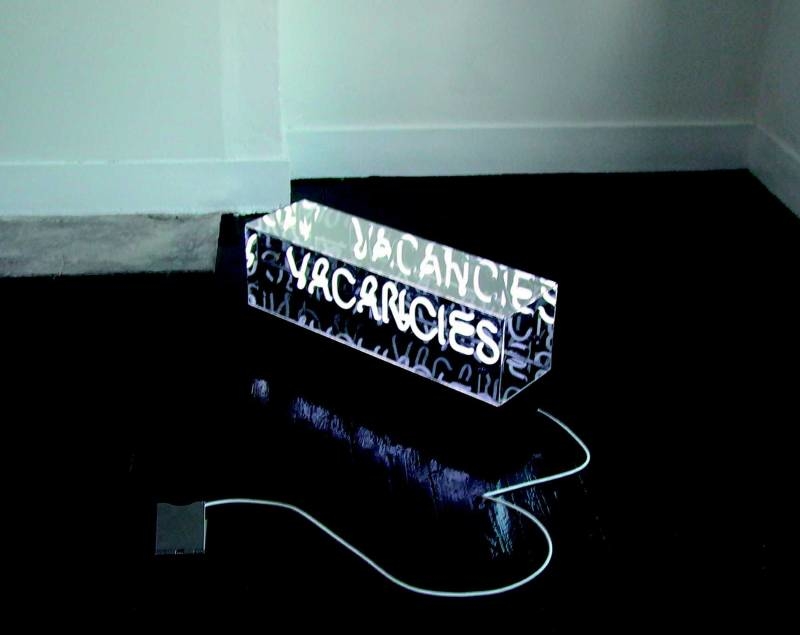


Artists: Layla Curtis, Mark Harris, Alistair MacKinven, Miriam Nabarro, Peter Saville
March 28 until June 28, 2011
Mint Hotel, London, The United Kingdom
Curated by Niekolaas Johannes Lekkerkerk and Marte Elisabeth Paulssen in collaboration with the Whitechapel Gallery
“An airport is no more than a sort of shopping mall, a simulated urban neighborhood. Give or take a few things, it offers the same benefits as a hotel.” - Georges Perec
The exhibition Together/Alone takes as its point of departure the notion of non-place as set out in the book Non-Places - An Introduction to Supermodernity (1995) by Marc Augé. The concept of non-place could be considered in the light of how we live in our current society, generally conceived as a society of work, leisure, “freedom”, and travel. In our global society, the non-place is one of the places we relate to. Through the relations individuals establish within the spaces that enable them to move from point A to point B, the non-place takes shape. Airport lounges, hotel lobbyʼs, and subway stations could be considered as examples of the non-place; they mediate a whole mass of relations, with the self and with others, through words, sometimes even texts. Non-places are generally conceived as places with a neutral configuration; more often they tend to mimic each other in order to encompass a sense of universality, as opposed to emphasize their, arguably, non-existing individual style or distinctive features. In other words, one feels as much at home in a hotel in Asia as in a hotel from the same chain in London, as well as in a Starbucks in Moscow or in Amsterdam.
As Marc Augé argues, non-places have the peculiarity that they are, to some extent, shaped by the words and texts they offer their visitors. One could speak of their “instructions for use”, which may be either prescriptive, prohibitive, or informative - mediated through various explicit (ordinary language) and implicit (codified) modes of communication. One could argue, the link between individuals and their surroundings in the space of non-place is established through the mediation of words, the subsequent “relations” or “shared” (causal) connections and narratives could be considered as “solitary contractuality”. In addition, the space of non-place could be regarded as a time vacuum, wherein acts and events proceed as if there were no other history than the last newspaper, as if each individual history would draw its conclusions from the inexhaustible and unending history in the present.
Together/Alone intends to consider the different forms of gray zones, for example crowd control, between the images (words, signs, texts) and the individuals that encounter the space of non-place in the key of power structures and relations. Power, as we experience and understand it today, is the moment in which the individual experiences the process of becoming a subject, a member of his or her society through encounters with others, with the laws of behavior, and with the unwritten rules of living know-how. Power is something that is experienced, to make this experience visible, the exhibition space should be regarded and activated as a discursive space, in order to make possible, what Jacques Rancière refers to as, “the distribution of the sensible”. This discursive space should be established by means of the works on view, to subsequently acnetwork of possible connections and meanings within which viewers position themselves.
The various workings of the overarching language structures (power) and the consequent subjectification of individuals informs many of the works on view. Together/Alone brings together a selection of contemporary artworks that intend to make visible, engage, confront, and problematize the numerous oppositions between language as a general force of power (as one of the structures that intend to regulate our everyday lives) within the notion of non-place, as well as the individual encounters with these language structures. Although the notion of non-place is not a new one, the intention is not so much to find out how we have reached this point, but perhaps recognize that we have reached it, that we are here.